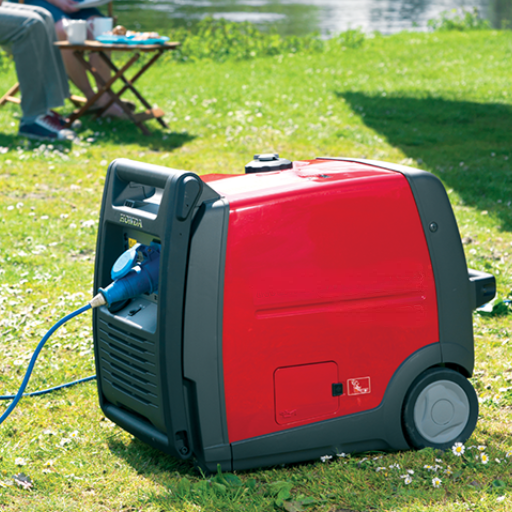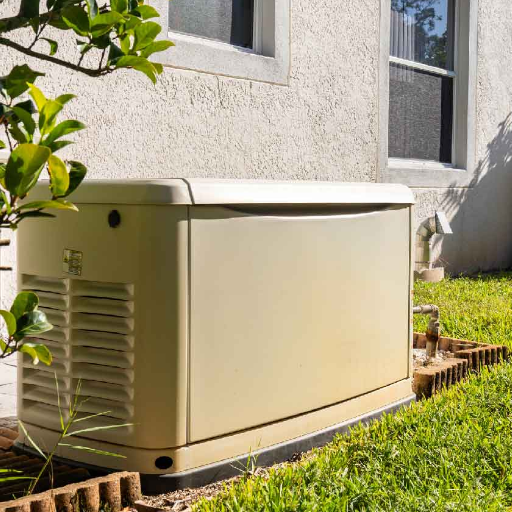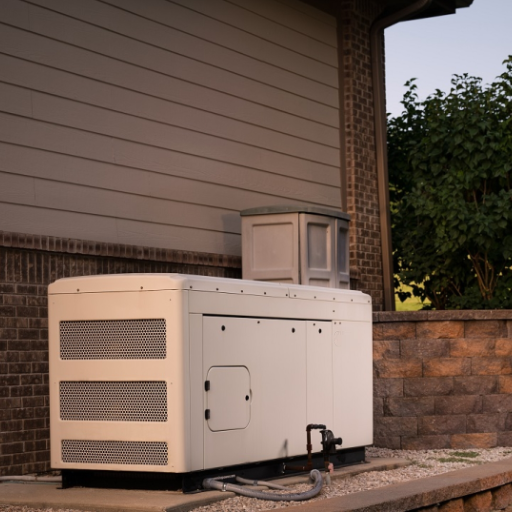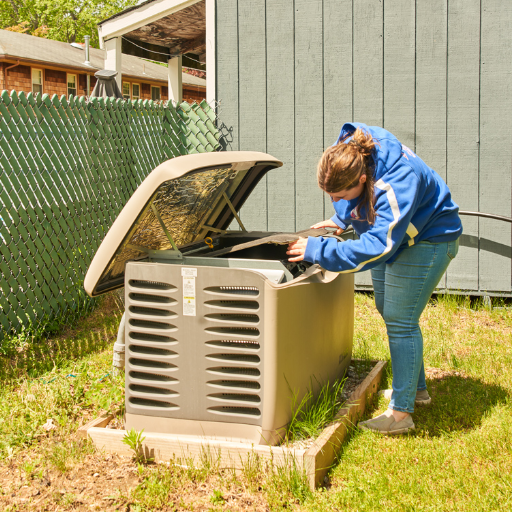Finding the correct 12V generator battery can be the make-or-break factor when it comes to ultimately reliable solutions for power. A suitable battery is required while running essential appliances during a power outage, charging for outdoor activities, or simply keeping the generator at its best. Being spoiled with options can be confusing when selecting one according to needs. This guide will assist in clearing your confusion on what to consider, comparing options, and making an informed choice. Let’s dive into everything you will want to know about a 12V generator battery, most suited to your specific needs.
What are the types of batteries needed for a 12V generator?
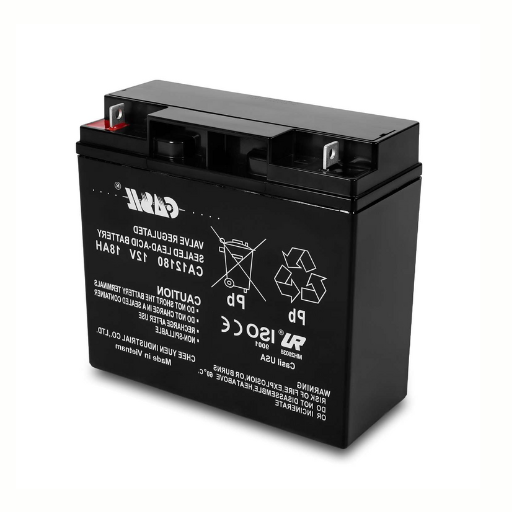
The common types of batteries for a 12V generator are:
- Lead-Acid Batteries.
These are the traditional battery types, and they are widely used. They are reliable, cost-effective, and suitable for most standard 12V generators. However, they require some maintenance to keep them running properly.
- AGM Batteries.
AGM batteries are a type of lead-acid battery, but they are maintenance-free and spill-proof. They are sturdier than the average lead-acid battery and work well under a wide range of conditions.
- Lithium-Ion Batteries.
A charger known for height-friendly design and superior energy efficiency, lithium-ion batteries have a longer life and hence require little or no maintenance. The batteries are useful when portability and maximum battery life are desired.
- Gel Batteries.
Gel batteries are another sealed option. They ensure maximum protection against vibrations and extreme temperatures, thus making them quite versatile.
Each type has benefits, so your choice will be determined by considerations such as your generator’s requirements, your budget, and your intended use.
Understanding SLA and AGM Technology
While greater efficiency, durability, and less maintenance are qualities that the SLA and AGM technologies bestow upon the batteries, these technologies are designed to provide useful power in many applications. Considering the sole characteristics of the battery would help choose the most appropriate one for your needs. Here are five important details about the SLA and AGM technologies:
- Sealed Design
SLA and AGM batteries are sealed and, therefore, cannot leak, rendering them more durable and safer to handle under different conditions.
- Maintenance Free
Since these batteries need to be periodically topped up with distilled water, their maintenance has become very convenient. In other words, users do not have to labor over periodically topping the battery with distilled water.
- Deep Discharge Capability
AGM batteries are known for their ability to undergo a deep discharge without much loss in performance, and thus, they are desirable in applications where very high demands may be made.
- Vibration Resistant
AGM batteries are more resistant to shock and vibration, making them more suitable for rugged environments or mobile equipment.
- Temperature Tolerance
Both generally perform well in high and low temperatures. The AGM type, for instance, is still efficient in high—and low-temperature climates, so it can be relied upon.
Safety, reliability, and performance characterize these technologies, which is why they are popular choices for work in various industries and use cases.
Comparing 12V 7Ah and 12V 18Ah Options
|
Feature |
12V 7Ah Battery |
12V 18Ah Battery |
|---|---|---|
|
Capacity |
7Ah |
18Ah |
|
Weight |
~2.5 kg (~5.5 lbs) |
~5.2 kg (~11.4 lbs) |
|
Dimensions |
151x65x94 mm |
180x77x167 mm |
|
Energy Storage |
Lower energy storage |
Higher energy storage |
|
Applications |
Emergency lighting, UPS, alarms |
Mobility scooters, solar, UPS |
|
Lifespan |
3-5 years |
3-5 years (lead-acid), up to 10 (Li-ion) |
|
Cost |
Lower cost |
Higher cost |
|
Portability |
Lightweight |
Heavier |
|
Charging Time |
Shorter charging time |
Longer charging time |
|
Usage Duration |
Shorter runtime |
Longer runtime |
|
Best For |
Low-power devices |
High-power or long-duration devices |
Benefits of Gel and Acid Batteries
|
Feature |
Gel Batteries |
Acid Batteries |
|---|---|---|
|
Leak-proof |
Yes, no liquid acid |
No, risk of acid spillage |
|
Maintenance |
Maintenance-free |
Requires regular maintenance |
|
Position Flexibility |
Usable in any position |
Must remain upright |
|
Durability |
Resistant to vibration and shock |
Less resistant to physical impacts |
|
Temperature Tolerance |
Operates in extreme temperatures |
Limited temperature range |
|
Lifespan |
Longer lifespan, up to 20 years |
Shorter lifespan, 3-5 years |
|
Cost |
Higher initial cost |
Lower initial cost |
|
Energy Density |
Moderate energy density |
Low energy density |
|
Recyclability |
Recyclable |
Highly recyclable |
|
Applications |
Ideal for deep-cycle uses |
Best for high surge current needs |
|
Self-discharge Rate |
Low self-discharge |
Moderate self-discharge |
|
Environmental Impact |
Less harmful due to sealed design |
Potentially harmful if improperly disposed of |
How to Maintain Your 12-Volt Battery for Optimal Performance?
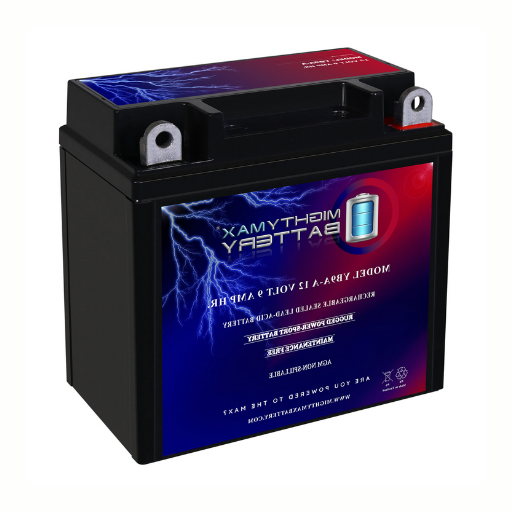
- Regular Battery Connection Checking
Ensure clean terminal faces with good tightness and free from corrosion. If you see any corrosion or dirt, prepare with a wire brush or a terminal cleaner.
- Avoid Overcharging
The trick is always to use a compatible charger and monitor the charging time to avoid overcharging, ultimately destroying your battery life.
- Keep It Clean and Dry
Regularly wiping your battery off to avoid dirt and moisture deposition, which triggers discharge or corrosion.
- Watch the Voltage Levels
Periodically check the voltage in your battery, maintaining it within the range. Recharge when needed.
- Proper Storage When Not in Use
Keep the battery in a dry and cool place, disconnecting it if it stays unused for a long time.
- Check if it is damaged
Always watch for cracks, leaks, or other signs that it needs to be replaced.
Those simple steps will help keep your 12-volt battery in service and ensure it does its work longer.
Essential Maintenance Tips for Longevity
|
Tip |
Description |
|---|---|
|
Inspect Regularly |
Check for corrosion, damage, and loose terminals. |
|
Clean Terminals |
Use baking soda and water to remove corrosion. |
|
Charge Properly |
Avoid overcharging or undercharging the battery. |
|
Avoid Extreme Temperatures |
Store in cool, dry places; insulate in cold. |
|
Use Correct Charger |
Match charger voltage to battery specifications. |
|
Prevent Deep Discharge |
Keep charge between 20%-80% for optimal health. |
|
Secure Battery |
Ensure it’s tightly mounted to avoid vibrations. |
|
Monitor Battery Life |
Test voltage and capacity regularly. |
|
Store Safely |
Use cases to prevent short circuits or damage. |
|
Replace Timely |
Replace aging batteries to avoid failures. |
Identifying and Replacing a Replacement Battery
Choosing the correct battery when replacing a 12-volt battery is paramount to ensure the right performance and compatibility. The following are five key factors to consider while identifying and replacing your battery:
- Battery Type
Consider the battery type your device or vehicle needs: AGM, Gel, or Standard Lead-Acid. Your owner’s manual gives you this vital information.
- Voltage and Capacity
Ensure the new battery’s voltage (e.g., 12V) and amp-hour (Ah) rating are the same as those of the original. Different capacity ratings might impair performance.
- Physical Dimensions
Also, consider the size of the battery case so that it fits snugly in the mounting location. Compare the height, width, and length with the previous battery.
- Terminal Position and Type
Note the position and type of battery terminals, whether top terminals or side terminals, and their locations (positive and negative). Wrong terminals will cause an improper fitment.
- Cold Cranking Amps (CCA)
Check the Cold Cranking Amps requirement for your device or vehicle, particularly if it concerns cars, as CCA weighs in on the ability to start the engine in cold conditions.
Considering all of these factors, you are assured that you end up with a replacement battery that meets your every need, ensuring you have more training time with your equipment.
Proper Storage Techniques for Your Battery
To properly store your battery, keep it in a cool, dry place, maintain a partial charge of around 40 to 60%, and ensure that it is not exposed to extremes of temperature or direct sunlight.
Which Brand Offers the Best Generator Batteries?
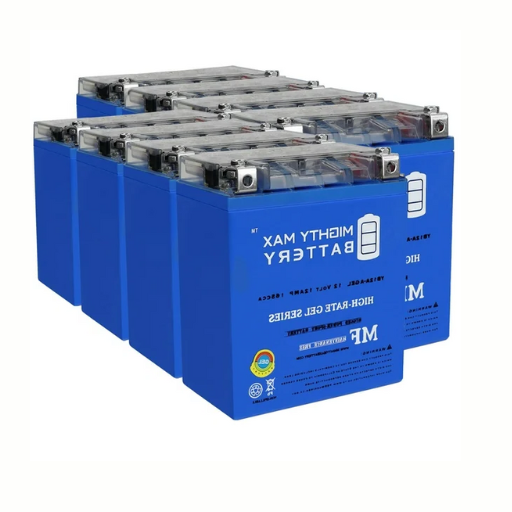
Among the best generator batteries, some of the most highly rated brands include Duracell, Optima, and Interstate. Duracell is known for its reliability and durability; Optima batteries stand out for their high performance and long life. Interstate is considered very well priced and the favored option for many users. Choosing the right brand for your generator will depend on your power requirements and budget. Always check that the battery you select fits your generator model.
Comparing Champion and Duromax
|
Key Point |
Champion Generators |
Duromax Generators |
|---|---|---|
|
Founded |
2003 |
2003 |
|
Headquarters |
California, USA |
California, USA |
|
Fuel Options |
Gasoline, Propane, Dual-Fuel |
Gasoline, Propane, Dual-Fuel |
|
Power Range |
2,000W to 12,000W |
3,500W to 12,000W |
|
Noise Levels |
Moderate to Quiet |
Moderate to Loud |
|
Portability |
Lightweight, compact options are available |
Heavier, robust designs |
|
Durability |
Reliable, long-lasting |
Sturdy, heavy-duty |
|
Price Range |
$500 – $1,500 |
$600 – $1,800 |
|
Customer Support |
Strong US-based support |
Decent support, mixed reviews |
|
Best For |
RVs, home backup, camping |
Whole-home backup, heavy-duty needs |
|
Warranty |
3 years (varies by model) |
3 years (varies by model) |
|
Special Features |
Inverter models, clean power |
High wattage, dual-fuel versatility |
Insights into Mighty Max Battery Offerings
Mighty Max Battery is a well-known brand offering more versatile and economical battery solutions. Their products are used in diverse fields, such as solar energy systems, backup power, electric vehicles, and portable tools. Regarding sealed lead acid (SLA) batteries, the company boasts great reliability with little maintenance required.
One of the main selling points is their use of Absorbent Glass Mat (AGM) technology, which allows for better performance through improved power efficiency and deep cycle characteristics. A prime instance would be their 12V 35Ah battery, which is mostly bought for solar power storage and trolling motor applications owing to its rugged construction and its ability to discharge at high rates. Apart from that, most of the Mighty Max batteries also prove to be spill-proof and resistant to shocks and vibrations, and are thus well suited for hostile environments.
In addition to the strongly backed warranty and fair prices, the cost factor makes it appropriate for customers who want value for their money. Recent reviews and performance evaluations have often extolled the batteries’ longevity in high-demand situations.
Deep cycle applications in renewable energy or a reliable backup system for emergencies show that Mighty Max Battery can economically and durably provide such applications. You should always double-check that the specific model fits your application needs for optimal efficiency and life.
Reviewing Generac and Stratton Generator Options
I tend to consider reliability, power output, and overall value with Generac and Stratton generators. Generac generators are known for their robust build, easy maintenance, and wide array of products for residential and commercial use. Meanwhile, Stratton generators usually lean toward portability and price, making them ideal for smaller or personal applications. I tend to go with whichever best fits my power requirements and budget while ensuring that performance would not be questioned during critical times.
Is a Portable Generator with a 12V 18Ah Battery Right for You?
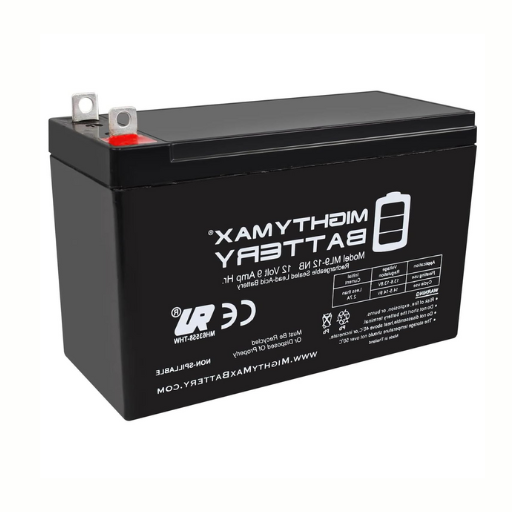
If you want to carry a power source with you to power a light or medium load, then a 12V 18Ah battery would be your choice. This little power source can charge the smallest gadgets, batteries, or emergency backup power. However, whether it is suitable or not depends on your power demands and how long the generator needs to be on. If your needs surpass its capacity, then a more powerful generator is a wise alternative. You should review the output and runtime of the generator so that you can select one that fits your needs.
Advantages of a Portable Setup
- Transportability
A portable generator is normally lightweight and must have wheeled or handle features for easy transport. For example, a power generator of about fifty pounds can be hoisted across and used wherever the intention lies.
- Space Saving
Engineering remains space-saving without compromising the function of these power sets. A portable generator could measure 2-5 cubic feet, adequate for households, RVs, or small office spaces with limited storage areas.
- Price
Portable generators tend to be less expensive than larger ones. For instance, a standard portable generator costs about $300 to $1,000, making it an affordable option for light to medium electric power needs.
- Highly Flexible
This versatility allows portable generators to charge anything from small household appliances to outdoor gear. Many models have outlet options, including USB ports and AC outlets, catering to all requirements.
- Rapid Setup and Procedure
Setting up and starting any portable generator will take minutes, either by pull start or electric start. This has great value in emergencies when there is a sudden need for a power source.
Understanding the Performance of 12V 18Ah Batteries
|
Key Point |
Details |
|---|---|
|
Voltage |
12V |
|
Capacity |
18Ah (Ampere-hours) |
|
Battery Types |
Lead-Acid, Lithium-Ion |
|
Weight |
2.4kg (Lithium), ~5.2kg (Lead-Acid) |
|
Dimensions |
~181x77x167 mm (varies by type) |
|
Lifespan |
3-5 years (Lead-Acid), ~10 years (Lithium) |
|
Cycle Life |
~400-500 (Lead-Acid), ~4000+ (Lithium) |
|
Charging Time |
1-8 hours (depends on charger and type) |
|
Applications |
UPS, solar storage, EVs, backup power |
|
Operating Temperature |
-15°C to 50°C (varies by type) |
|
Self-Discharge Rate |
<3% per month (Lithium), higher for Lead-Acid |
|
Cost Range |
$50-$120 (Lead-Acid), $150-$300 (Lithium) |
|
Advantages (Lithium) |
Lightweight, efficient, long lifespan |
|
Advantages (Lead-Acid) |
Affordable, widely available |
|
Maintenance |
Minimal for Lithium, regular checks for Lead-Acid |
Exploring Dual-Fuel Generator Compatibility
In my search for a dual-fuel generator, I concentrate on ensuring that the generator can work efficiently with petrol and propane without losing performance. I look into the manufacturer’s specs to ensure that it is a dual-fuel unit and can smoothly switch between the two fuel types. I also consider the availability and storage of both fuel types and whether they fit my requirements for usage. I can confidently choose a dual-fuel generator that fits my needs by analyzing these considerations.
How to Choose a Generator Replacement Battery?
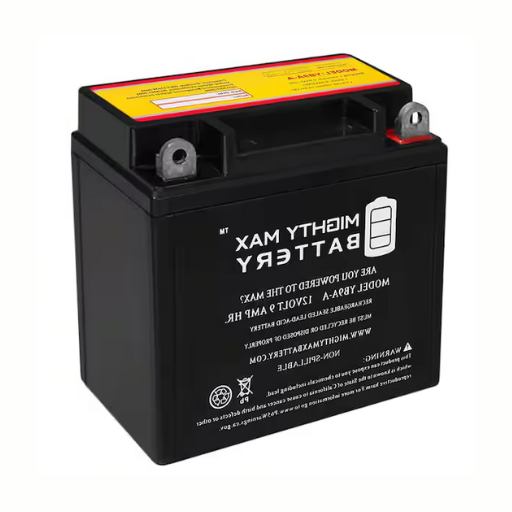
When purchasing a battery for a generator replacement, look into the generator’s manual for the types and specifications of batteries recommended by the manufacturer. The replacement battery must match the voltage and capacity requirements of the generator to be accepted as a safe alternative. A known brand with a reputation for durability and quality can be chosen next. Consider if it will require any maintenance while in use, like refilling water, or if it is a sealed, maintenance-free type. Finally, arrange for a warranty and servicing support to put your mind at ease should any problems arise. Correctly selecting a battery results in reliable operation, and an extension of generator life comes with it.
Factors to Consider for a Generator Replacement
Several factors should be analyzed carefully when replacing a generator to get an optimal generator suitable for your work. Here are the five most important considerations:
- Power Requirements
Decide on the wattage needed to run your essential appliances and devices. Measure starting and running watts, as some equipment requires a power surge. For instance, a refrigerator needs around 1,200 starting watts but only about 200 running watts.
- Fuel Type
Generators can use different types of fuel: gasoline, diesel, natural gas, and propane. Each has its pros and cons. Diesel, for instance, is efficient in power production and lasts a very long time, while propane burns cleaner and has a perfect shelf life.
- Size and Portability
Think of the machine’s physical dimensions, then decide whether it needs to be portable. A small portable generator will serve you well at events or emergencies if a large standby one is in mind for permanent installation and greater power output.
- Noise
Noise levels vary among generator models. Generators making noises in the range of 50 to 70 dB can be considered quieter ones. Highly confident that a noise-free or low-noise generator would be preferable in a residential area to minimize disturbance.
- Budget and Cost Efficiency
Consider the overall cost of the generator, including acquisition price, installation fee, and operational costs such as fuel and maintenance. Research should be done on energy-efficient models that will ultimately decrease long-run costs without compromising performance.
When choosing a generator replacement, consider these factors to ensure that the unit fully satisfies your needs with constant reliability and efficiency of operation.
Compatibility with XG10000E Portable 5802-2 12V 18Ah
|
Key Point |
Details |
|---|---|
|
Voltage |
12V |
|
Capacity |
18Ah |
|
Battery Type |
Sealed Lead Acid (AGM) |
|
Terminal Type |
NB |
|
Dimensions (L x W x H) |
7.09 x 3.03 x 6.57 inches |
|
Weight |
12.1 lbs |
|
Maintenance |
Maintenance-free, no acid/water needed |
|
Warranty |
12-month warranty |
|
OEM Compatibility |
Exact fit for XG10000E Portable 5802-2 |
|
Safety Certification |
UL Recognized |
Understanding Terminal Connections and Specifications
Being compatible and functional is affected by the terminal type of the battery. The XG10000E-5802-2 Portable uses an NB terminal type so that it may be properly connected to and accepted by the equipment with which it works. These terminals are engineered to provide optimal conductivity and are corrosion-resistant and wear over time.
Key Specifications of NB Terminals:
- Material: Lead alloy with tin plating.
- Dimensions: NB terminals are usually tiny and suitable for portable equipments use.
- Design: The narrow blade design allows quick connection and secure fit.
- Current Handling: Most NB terminals can handle very high current loads efficiently, which places them among heavy-duty applications.
When connecting the battery, the polarity alignment must be carefully observed. Any reverse connections would embarrass the equipment or might be dangerous. Keep the terminals ultra clean and make firm connections to ensure optimum output.
Based on safety standards, the battery is UL certified, which means it passed stringent safety standards and benchmarks for performance. Always reference the manufacturer’s manual for the appropriate guidelines for terminal connection, battery, and operation for the best and safest use of the device.
References
-
Portable Nano-Hydro Power Generator for the DC House Project – Published by Cal Poly Digital Commons, this paper discusses the use of 12V lead-acid batteries in energy storage for hydro generators.
-
Solar-Powered AC/DC Power Supply for Electronics Engineering Laboratory – This document explores the integration of 12V batteries in solar-powered systems for laboratory applications.
-
School of Engineering: Department of Electrical and Information Engineering – A detailed study on 12V lead-acid battery charging and its applications in engineering projects.
Frequently Asked Questions (FAQ)
Q: What should I consider when choosing a rechargeable battery for my 12V generator?
A: When selecting a rechargeable battery for your 12V generator, consider factors such as capacity, type (e.g., SLA AGM), compatibility with your generator model, and whether you need a maintenance-free option. Ensure the battery is a perfect fit for your generator’s battery tray and is compatible with Generac or other brands you use.
Q: Is a 12V 8AH battery compatible with my generator?
A: A 12V 8AH battery can be compatible with a generator, but it is essential to check your generator’s specifications and power requirements to ensure it provides sufficient backup power. Compatibility with brands such as Generac is also crucial.
Q: Can I use a 12V 5Ah battery for a standby generator?
A: A 12V 5AH battery may be used in a standby generator if it meets the required specifications. However, for higher power needs, you might consider a battery with a higher capacity, like a 12V 18Ah battery.
Q: What is the difference between ML18-12 and 22AH batteries?
A: The ML18-12 is a specific model of SLA AGM battery typically rated at 18 Ah, whereas a 22Ah battery provides higher capacity. The choice between the two depends on your generator’s requirements and the duration of backup power you need.
Q: Is the AJC battery a good brand replacement for my 5802 2 12V 18AH generator battery?
A: AJC batteries are often considered a high-quality brand replacement for the 5802 2 12V 18AH generator battery. They are known for their reliability and are a perfect fit for battery trays designed for this generator model.
Q: How do I ensure my battery is compatible with the Generac XG Series XG10000E portable generator?
A: Confirm compatibility by checking the battery’s specifications against the Generac xg series xg10000e portable generator’s requirements, including voltage, capacity, and terminal type (like F2). The battery should also fit securely in the generator’s battery tray.
Q: What maintenance is required for a maintenance-free battery?
A: Maintenance-free batteries, like specific SLA AGM models, require minimal upkeep. However, it’s still important to regularly check connections, keep the battery clean, and use a battery tender to maintain a charge when the generator is not in use.
Q: Can I extend the life of my generator’s rechargeable battery?
A: Yes, to extend the life of your generator’s rechargeable battery, ensure it is charged regularly, avoid deep discharges, store it in a cool, dry place, and use a battery tender to prevent overcharging when not in use.
Q: What is the role of the battery tray in a generator?
A: The battery tray in a generator securely holds the battery in place, ensuring safe and stable operation. It is crucial for preventing movement and damage to the battery during generator use.
Q: Why is choosing the right watt capacity necessary for an electric generator battery?
A: Choosing the right watt capacity for an electric generator battery is important because it determines the amount of power the battery can deliver and for how long. Ensuring the battery matches the generator’s power requirements is vital for efficient and reliable operation.



